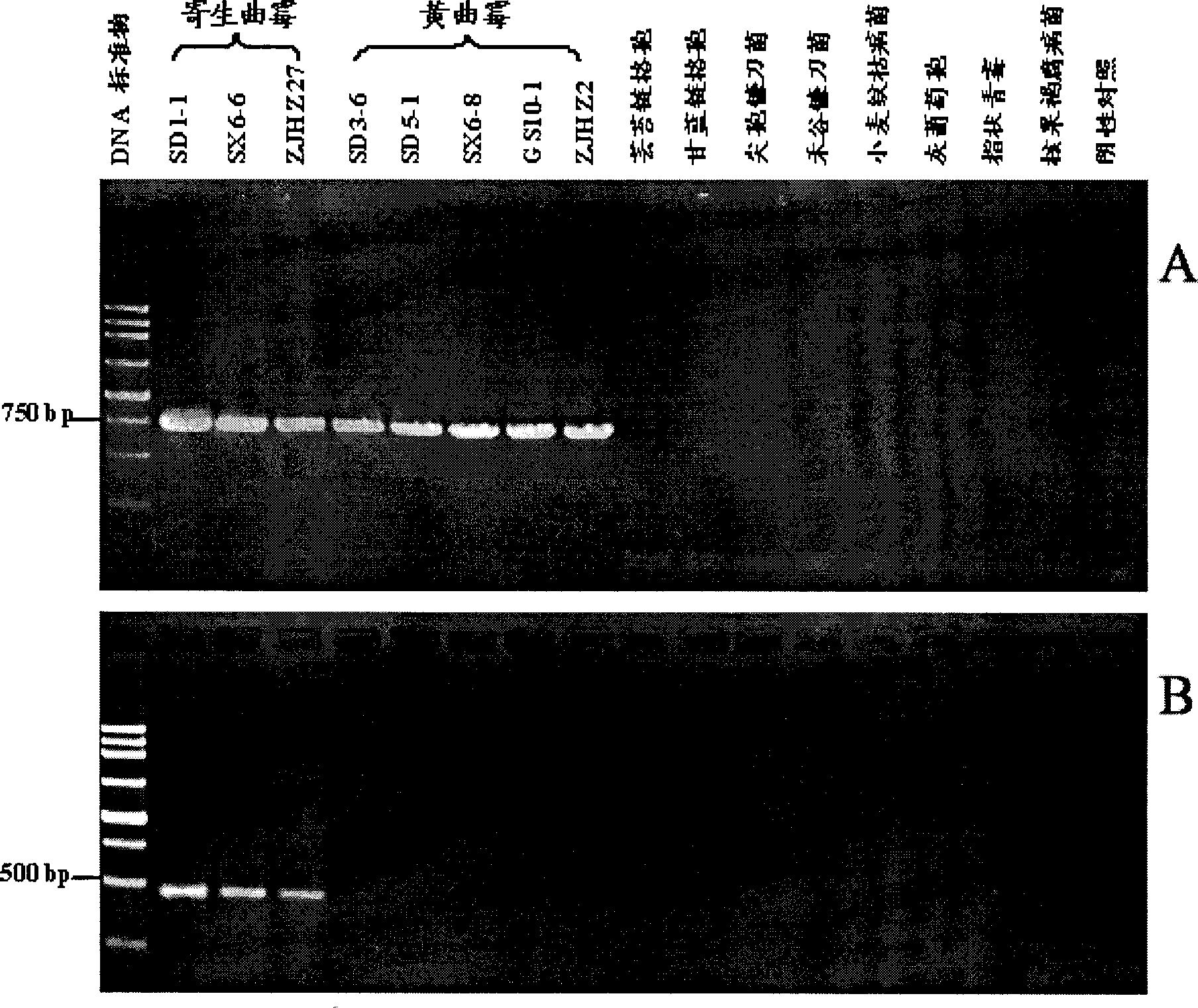Primer sequence for identifying Aspergillus parasiticus and Aspergillus flavus and identification method thereof
A technology of Aspergillus parasiticus and primer sequence, which is applied in the field of molecular biology, can solve laborious and time-consuming problems, and achieve the effect of high speed, high specificity and high reliability
- Summary
- Abstract
- Description
- Claims
- Application Information
AI Technical Summary
Problems solved by technology
Method used
Image
Examples
Embodiment Construction
[0023] Selected strains
[0024] Alternaria brassicae, A. brassicicola, Fusarium oxysporum, F. graminearum, Rhizotonia cerealis, Grape cinerea cinerea, Penicillium digitatum, Monilinia fructicola and 3 Aspergillus parasitica strains (SD1-1, SX6-6 and ZJHZ27) and 5 Aspergillus flavus strains (SD3-6 , SD5-1, SX6-8, GS10-1 and ZJHZ2).
[0025] The above-mentioned bacterial strains are preserved in the Institute of Biotechnology of Zhejiang University, and can also be separated and purified by conventional plate streaking. The above-mentioned bacterial strains are only used as experimental materials. Of course, other bacterial strains can also be selected, which has no effect on the implementation of the present invention.
[0026] DNA extraction
[0027] Scrape mycelium (100 mg) from the PDA plate with an inoculation needle, place it in a 1.5-mL Eppendorf tube, add 500 μL of DNA extraction lysate (200 mM Tris-HCl, 50 mM EDTA, 20 mM NaCl, 1% SDS, pH8.0), Grind thoroughly with a...
PUM
 Login to View More
Login to View More Abstract
Description
Claims
Application Information
 Login to View More
Login to View More - R&D
- Intellectual Property
- Life Sciences
- Materials
- Tech Scout
- Unparalleled Data Quality
- Higher Quality Content
- 60% Fewer Hallucinations
Browse by: Latest US Patents, China's latest patents, Technical Efficacy Thesaurus, Application Domain, Technology Topic, Popular Technical Reports.
© 2025 PatSnap. All rights reserved.Legal|Privacy policy|Modern Slavery Act Transparency Statement|Sitemap|About US| Contact US: help@patsnap.com



